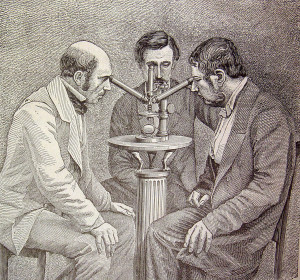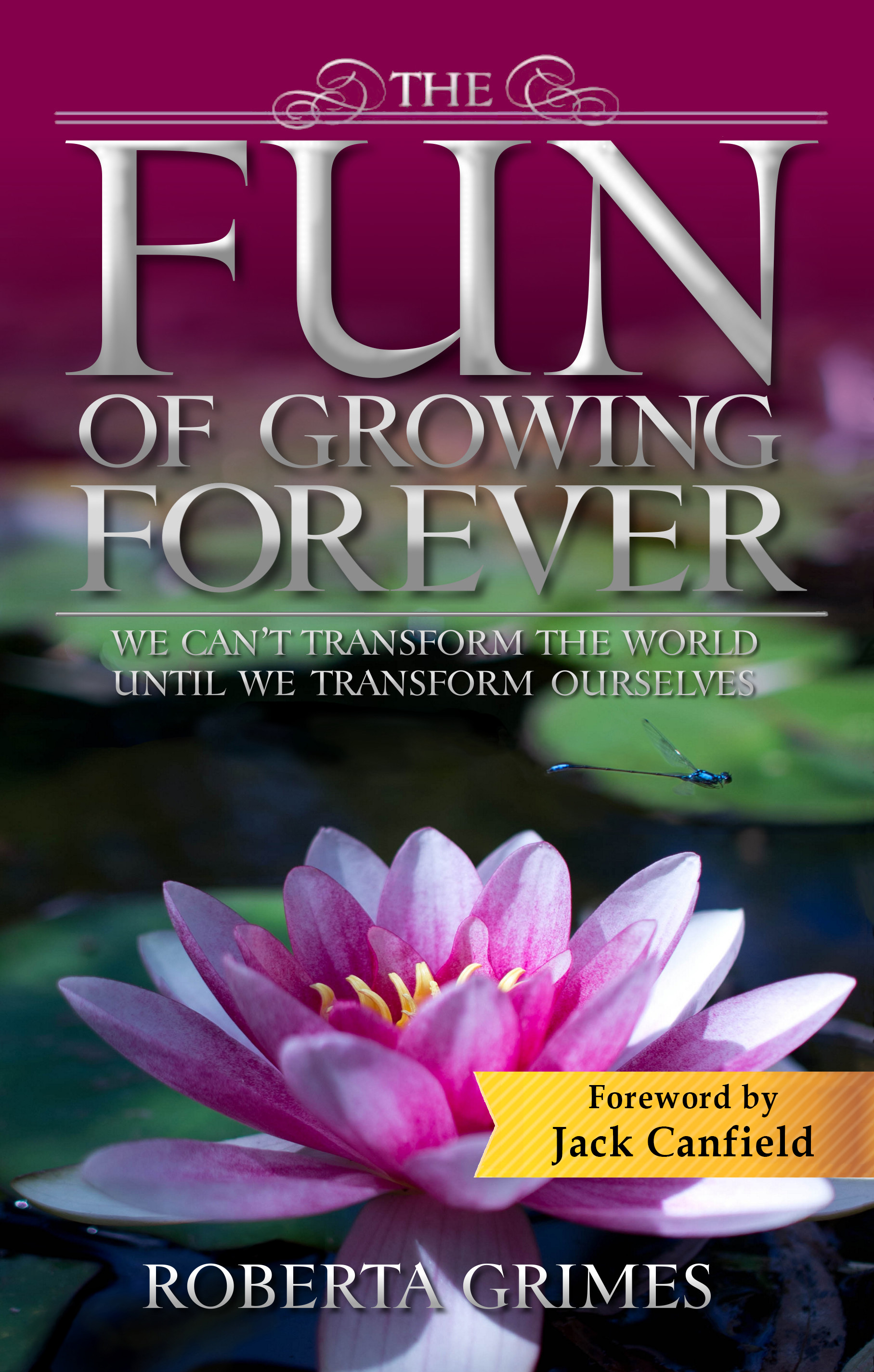One of the reasons why it is so essential that mainstream scientists begin to get a clue about the nature of reality is that the truth is so wonderfully explanatory. Human minds are part of eternal Mind, which is the  core creative force and the only reality. All of this is as scientific as anything could be scientific, and it is at the core of what we all should be thinking as we study reality.
core creative force and the only reality. All of this is as scientific as anything could be scientific, and it is at the core of what we all should be thinking as we study reality.
Mainstream science, however, remains a belief-system. Whatever doesn’t fit its predetermined dogmas is taboo, and cannot be studied by any scientist who cares about his own career.
If you don’t believe me, then listen to my friend Hank Green, who is a wonderful popularizer of traditional science and my particular guilty pleasure. Green puts out frequent videos on Scishow.com that explain a lot of cool scientific stuff. The videos are brief, the information is wonderful, and the man himself is so entertaining that I cannot get through the day anymore without watching at least one SciShow video. While Green himself would be the first to insist that every scientist stay on the mainstream reservation, he is open-minded enough to at least say that scientists have their own taboos.
Green cheerfully tells us that scientific taboos have existed “forever” because scientists are desperate to protect “their jobs, their tenure, or their credibility.” He lets us know that today this unwillingness to study anything that doesn’t fit “current social norms” is called “the Simmelweis Reflex” after Dr. Ignaz Simmelweis, a Hungarian physician who in the 1840s proposed that doctors should wash their hands before delivering babies. In the eighteenth and early nineteenth centuries so many women died of childbed fever that it was normal for men to bury several wives. Simmelweis was preaching common sense, but his radical idea was received with horror. He was fired from his job and hounded out of medicine, eventually dying in 1865 in an insane asylum.
A few years later, of course, Louis Pasteur’s germ theory of disease showed that Dr. Simmelweis had been right. This experience made the scientific community no more introspective, but it did give scientists a name for their own foolish perpetuation of taboos in what is supposed to be a field dedicated to the open-minded study of reality. The Simmelweis Reflex remains a force to this day.
The Simmelweis Reflex is what makes modern scientists decide that the study of the afterlife evidence is as taboo as Dr. Simmelweis’s colleagues considered his germ theory of disease to be. Eventually its longstanding taboo on studying the afterlife evidence is going to hold up twentieth-century science to the ridicule that it deserves.
Wait – that sounded mean-spirited. Sorry. What I meant to say is that mainstream science’s observation of taboos is causing us incalculable harm because the afterlife evidence and the afterlife science that mainstream scientists refuse to consider give us ways to explain so much of what must otherwise be seen as beyond explanation. Here are just three examples from my pile. I thought about calling this blog post “The Minds of the Dead, a Two-Faced Baby and a Talking Mongoose” before sanity prevailed:
1) The minds of the “Dead.” Scientists are coming to understand that many people who seem to be unconscious or semi-conscious and in a permanent vegetative state are in fact conscious to some extent but unable to communicate. Coming up with ways to help these locked-in souls to access the world is now a major concern. Researchers in the field of afterlife communication are communicating with these supposedly unconscious folks even now, and sometimes in chatty detail.
2) Faith and Hope are christened: Conjoined twin girls who share a body but have two brains continue to defy medical odds after miraculous birth. Faith and Hope are two brains and faces that share a single newborn body. Could there be anything more tragic? How are we supposed to think about this? Mainstream science, of course, has not a clue. But those who study the afterlife evidence know that nearly all of us write plans for our lives before we are born, and a birth like this one surely was planned for the benefit of the two babies, for their family’s benefit, or even for the further edification of humankind. Abigail and Brittany Hensel are two similarly conjoined young women who already are educating anyone who doesn’t consider even acknowledging their very existence to be taboo. They are twins conjoined from the chest down. By definition they are genetically identical, and their life experiences have been mostly the same. Now 24, they are college graduates, lovely young women, and as different from one another in tastes, preferences, personalities, and everything that makes us human as might be two random people you could meet on the street. Explain THAT, mainstream science. Can’t do it? Well, we can. The Hensel girls offer wonderful evidence that each human mind is unique and eternal.
3) In England, Researchers Investigate Case of the Talking Mongoose. Apparently a talking mongoose named Geff (his name was pronounced “Jeff” but the mongoose couldn’t spell) appeared one night in 1931 to a farming family on the Isle of Man and proceeded to recite nursery rhymes, sing “Carolina Moon,” and generally make a curmudgeonly nuisance of himself, to the point where the British government is still investigating Geff stories eighty years later. I chose this Wall Street Journal article as an illustration of the legions of such stories that mainstream science has to stonewall and ignore because it has no way even to investigate them. Maybe Geff was just a goof by a bored British family. Maybe Geff was what he claimed to be, The Eighth Wonder of the World. A consciousness theory of everything allows us to investigate alleged phenomena like Geff using well-established alternative parameters and hypothetical explanations.
Of course, the most important thing is for you to come to understand that your mind really is eternal. Once you know that, you will never again fear anything. Your future peace of mind comes first. On the other hand, though, it also would be nice for mainstream scientists to begin to get a clue. It is impossible for scientists to understand a reality of which they are so fearful that most of it still remains subject to the sad Simmelweis taboo.

 wrong?
wrong? look at them all, yet mainstream science ignores this field altogether.
look at them all, yet mainstream science ignores this field altogether. either side of the issue. I only note that our culture has become an abortion culture, in which the disposal of fetuses has become an easy substitute for personal responsibility and common sense.
either side of the issue. I only note that our culture has become an abortion culture, in which the disposal of fetuses has become an easy substitute for personal responsibility and common sense. against the fact that she not only lived in a barbaric abortion culture, but she herself had two abortions? I think you can read the above review – or read a host of contemporary comments about the fact that some Founding Fathers were slaveholders – and you already know the answer.
against the fact that she not only lived in a barbaric abortion culture, but she herself had two abortions? I think you can read the above review – or read a host of contemporary comments about the fact that some Founding Fathers were slaveholders – and you already know the answer. proof that there can be no loving God, while even those who are very religious will sometimes fret and question their beliefs as they try to answer it. But when we answer the question from the point of view of the afterlife evidence, we find that it all makes perfect sense. A lifetime on earth is just a hard day in school.
proof that there can be no loving God, while even those who are very religious will sometimes fret and question their beliefs as they try to answer it. But when we answer the question from the point of view of the afterlife evidence, we find that it all makes perfect sense. A lifetime on earth is just a hard day in school. guides and those significant to us might make adjustments as our lives go on, but the afterlife evidence overwhelmingly tells us that you planned all the bad things that happen to you, and you eagerly planned them as spiritual lessons.
guides and those significant to us might make adjustments as our lives go on, but the afterlife evidence overwhelmingly tells us that you planned all the bad things that happen to you, and you eagerly planned them as spiritual lessons. Fortunes, and our sacred Honor” to the fight for their freedom. They risked it all.
Fortunes, and our sacred Honor” to the fight for their freedom. They risked it all. authority and approach God directly: “But when you pray, go into your room, close the door and pray to your Father, who is unseen. Then your Father, who sees what is done in secret, will reward you.” (MT 6:6) When you are told that you don’t need religious masters, then the eventual realization that you don’t need secular overlords either is inevitable.
authority and approach God directly: “But when you pray, go into your room, close the door and pray to your Father, who is unseen. Then your Father, who sees what is done in secret, will reward you.” (MT 6:6) When you are told that you don’t need religious masters, then the eventual realization that you don’t need secular overlords either is inevitable.
 This wonderful picture was taken at the Neanderthal museum in Germany. It’s from a recent
This wonderful picture was taken at the Neanderthal museum in Germany. It’s from a recent  nothing is solid. As the great physicist, astronomer and mathematician Sir James Jeans once said, “The universe begins to look more like a great thought than a great machine.” All the levels of energy-based reality – including this one – exist in the same place, and they are separated from one another only by their different rates of vibration. So far, so good. The channels of your television set all exist in the same place as well, and that analogy makes it easier for us to imagine what actually happens at death. The dead tell us that when you die your mind will simply raise its own rate of vibration from this level of reality to the next, very much as you might change television channels, and there it will pick up a whole new solid reality! Dying is just that simple.
nothing is solid. As the great physicist, astronomer and mathematician Sir James Jeans once said, “The universe begins to look more like a great thought than a great machine.” All the levels of energy-based reality – including this one – exist in the same place, and they are separated from one another only by their different rates of vibration. So far, so good. The channels of your television set all exist in the same place as well, and that analogy makes it easier for us to imagine what actually happens at death. The dead tell us that when you die your mind will simply raise its own rate of vibration from this level of reality to the next, very much as you might change television channels, and there it will pick up a whole new solid reality! Dying is just that simple. attest that his technique works well. Dr. Weiss then found that if there was no obvious source of problems in a past life, he could just as easily progress people under hypnosis to a future lifetime, and there he often found the causative trauma!
attest that his technique works well. Dr. Weiss then found that if there was no obvious source of problems in a past life, he could just as easily progress people under hypnosis to a future lifetime, and there he often found the causative trauma!



 and a greater reality seems to be based in the millennia-long war of ideas between science and Christianity. Both sides seem to have decided long ago that reality must have been either created by God in seven days exactly as the Bible suggests, or sprung from nothing as a clockwork automaton that had no spiritual component whatsoever. This is an ancient, epic battle to the death with just one possible victor, despite the fact that there has long been abundant evidence that neither side has it right. The battle continues even today in the debate over whether “intelligent design” can be taught in schools as an alternative to a rigid version of Darwinian evolution lacking any epigenetic complexities that not even most scientists support.
and a greater reality seems to be based in the millennia-long war of ideas between science and Christianity. Both sides seem to have decided long ago that reality must have been either created by God in seven days exactly as the Bible suggests, or sprung from nothing as a clockwork automaton that had no spiritual component whatsoever. This is an ancient, epic battle to the death with just one possible victor, despite the fact that there has long been abundant evidence that neither side has it right. The battle continues even today in the debate over whether “intelligent design” can be taught in schools as an alternative to a rigid version of Darwinian evolution lacking any epigenetic complexities that not even most scientists support.









